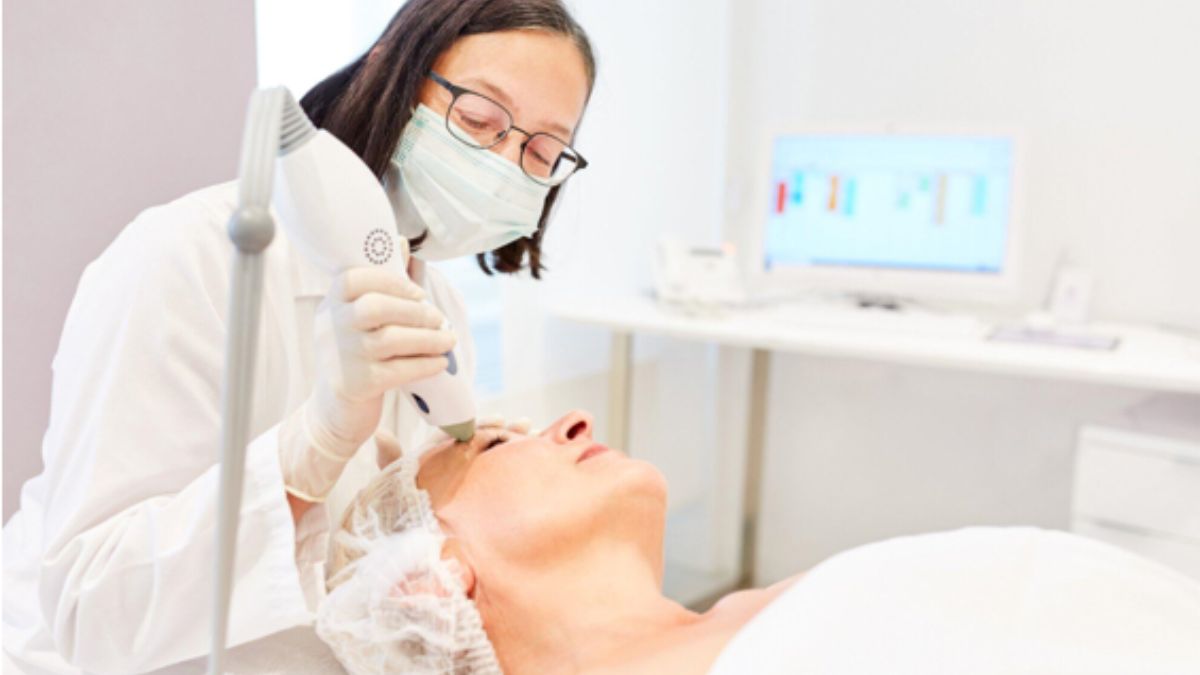HEALTH
Eye Health Essentials for the Modern Individual

Eye health is often taken for granted until problems arise. As the windows to our world, the eyes play a central role in how we perceive and interact with everything around us. From routine activities to momentous events, our vision shapes our experience and quality of life. Understanding and adopting essential eye care practices can protect your vision and maintain the quality of life as you age.
Understanding eye care essentials prepares you for potential challenges while maximizing your visual acuity. It allows you to take proactive measures against preventable conditions and enjoy all the sights life offers. Here’s a comprehensive guide on maintaining healthy eyes, an endeavor worth investing time and effort.
Introduction: The Significance of Eye Health
Good vision is a precious asset that extends well beyond the ability to read or drive smoothly. It shapes our understanding and interaction with the world and influences our mental and physical health. As technology becomes more integrated into daily life, with screens in constant view, it’s vital to appreciate and protect one’s vision. Regular visits to an optometrist near me can ensure that your eyes are well-cared for, contributing to long-term eye health and clarity. Regular precautions and awareness ensure that you enjoy the full spectrum of life’s experiences.
Common Vision Problems and Prevention
Many individuals face vision issues such as myopia (nearsightedness), hyperopia (farsightedness), and astigmatism, which can develop at any age. These conditions are often a result of genetic predisposition but can be exacerbated by environmental factors like prolonged screen time and poor lighting. Simple habits, such as taking breaks from screens and ensuring adequate lighting when reading or working, can significantly reduce eye strain. Moreover, shielding your eyes from harmful UV rays outdoors is essential—consider consulting resources like the CDC’s recommendation for additional guidance on maintaining a healthy vision.
Regular Eye Exams: What to Expect
Setting up routine eye check-ups is essential for identifying possible issues before they impact your sight. During an eye exam, an optometrist will conduct a series of tests to assess your overall eye health, visual acuity, and eye muscle performance. These exams can also uncover signs of underlying health problems that may manifest in the eyes, such as diabetes and hypertension. By catching issues early, interventions can be more effective, preserving your vision for years. Routine exams protect your sight and contribute to your general health.
Nutrition for Healthy Eyes
Your nutrition significantly influences the upkeep of eye health. Foods high in nutrients such as omega-3 fatty acids, lutein, zinc, and vitamins C and E are especially advantageous for maintaining good vision and avoiding age-related issues. Omega-3s, found in fish like salmon, support retinal health, while lutein and zeaxanthin, present in leafy greens, help form the macular pigment that protects against harmful light. Zinc and vitamins in nuts and fruits help boost overall immune function and combat degenerative changes such as macular degeneration. Incorporating a variety of fruits, vegetables, and fish into your diet can provide the nutritional support your eyes need to remain strong and vibrant.
Protecting Your Eyes in the Digital Age
With digital devices all around us, digital eye strain cases are on the rise. Extended time spent in front of screens without sufficient breaks may result in issues like dry eyes, blurry vision, and headaches. Adhering to the 20-20-20 rule can alleviate some of this strain: every 20 minutes, look at something approximately 20 feet distant for no less than 20 seconds. This method aids in relaxing the eye muscles and alleviates fatigue, allowing you to sustain better vision during the day. Furthermore, think about employing blue light filters on devices to reduce additional eye strain, a crucial measure for protecting your eyes in a screen-centered environment.
Lifestyle Habits That Support Vision Wellness
Incorporating specific lifestyle habits can significantly aid in maintaining optimal eye health. Regular exercise promotes good circulation, ensuring oxygen and nutrients are delivered to the eyes. Staying hydrated keeps the eyes moist, reducing the risk of dryness and irritation. Sleeping well allows your eyes to rest and repair overnight, preventing fatigue and supporting overall eye function. These practices contribute to enhanced vision and overall physical well-being, supporting a more vibrant and active lifestyle.
The Importance of Protective Eyewear
Engaging in specific activities without the appropriate eye protection can lead to injuries. Whether playing sports, engaging in activities where eye protection is necessary, or working with hazardous materials, wearing protective eyewear is a simple yet effective way to safeguard your eyes from damage. Choosing the correct protection for each activity is vital to shielding your vision against environmental threats and impacts that could result in lasting damage.
Conclusion: Prioritizing Your Eye Health
Incorporating these practices into your life can significantly enhance your eye health, ultimately improving your quality of life. Regular check-ups, nutrient-rich diets, and mindful habits are pivotal to maintaining good vision. Prioritizing eye care is a small price for the invaluable gift of sight. Doing so ensures a future filled with clarity, color, and vibrant experiences. Proactive eye health measures protect one of your most vital senses and contribute positively to your overall well-being.
HEALTH
The Role of Community in Veteran Health and Wellness

Did you know that a strong community connection can play a transformative role in the health and wellness of our veterans? In recent years, studies have shown that social integration significantly boosts mental health and overall well-being, especially for those who have served in the military.
Veterans often face unique challenges, and having a supportive community can be a crucial factor in their recovery and sustained health. This article explores the vital importance of a community in veteran health and how senior living options can enhance their overall quality of life. Keep on reading.
The Importance of Community in Veteran Well-Being
For veterans transitioning back into civilian life, the shift can often feel overwhelming. Many struggle with feelings of isolation and alienation from those who haven’t shared similar experiences. This is where a sense of community becomes essential.
A supportive network helps veterans feel connected and valued. In senior living environments, fostering a community spirit can lead to:
A Sense of Belonging
Veterans often feel better when they know others share their past. Living with peers who understand can make them feel safe. This helps build real friendships and trust.
Improved Mental Health
Being around others can ease sad or anxious thoughts. Talking, laughing, and sharing stories helps the mind. These small moments lift spirits each day.
Physical Health Benefits
Group activities like walks or games keep the body moving. Staying active with others can be more fun. It helps veterans stay strong and feel better.
Easy Access to Resources
A strong group can guide members to helpful tools. It’s easier to ask for help when others understand. Veterans find what they need without feeling lost.
How Senior Living Enhances Social Connections
Many places where seniors live are made to feel like a strong community. Some have special programs just for veterans. These programs help them feel supported and connected with others.
There are group trips, fitness classes, and other fun things planned for veterans. These keep them busy, happy, and moving. It also helps them meet people who understand them.
Some places also give extra care for mental health. Veterans can talk to people who know about things like PTSD. Being around others with similar stories can help them feel less alone.
Building Supportive Care Frameworks
Supportive care is more than just meeting physical needs; it’s about holistic wellness that encompasses emotional, mental, and social aspects. Within a community-focused approach, veterans can tap into:
- Peer support groups
- Integrative wellness programs
- Access to healthcare
The Unique Proposition of Community-Focused Senior Living
Choosing a senior living arrangement that emphasizes community focus provides veterans with the unique opportunity to enhance their quality of life. Not only can they maintain independence, but they can also engage in a variety of activities designed to foster relationships and an active lifestyle.
Facilities that prioritize a community focus in veteran health often include programming tailored specifically for them. They offer more than just a place to live. Veteran programs for seniors create a supportive atmosphere promoting veteran wellness through engagement, shared experiences, and friendship.
Invest in Your Health and Well-Being Today!
If you or a loved one is a veteran looking for a welcoming community, consider exploring options that offer comprehensive support and a vibrant community in veteran life. With a focus on wellness and connection, you can conquer the challenges of daily living and thrive among peers who understand and appreciate your journey. Your health and well-being deserve a community that cares.
For more related topics, check out the rest of our blog!
HEALTH
How Cannabis Extracts are Redefining Medical Applications

How can one plant help with so many health needs?
Cannabis extracts are now used in new ways to treat different medical problems. These extracts come in forms like oils, drops, and pills. Many people use them to feel better without strong drugs.
Doctors and patients are starting to see the value of these products. They are easy to use and made with care. If you’re looking for new ways to feel better, cannabis extracts might be worth a try. Want to learn more about how they work and how they can help? Keep reading!
Managing Pain
Many people deal with pain each day, and finding safe ways to manage it matters. Cannabis extracts are giving new hope by offering support for pain that doesn’t always respond to common treatments.
These extracts may help with joint pain, nerve pain, and pain from injuries. They work by interacting with the body’s systems in a natural way. Unlike some strong drugs, they are less likely to cause harm with long use.
Doctors are now looking at these extracts as a helpful tool for people with ongoing pain. As more studies are done, more is learned about their benefits. To stay informed about growing options for care, reading articles like these can help guide smart choices.
Helping with Sleep
Trouble falling asleep or staying asleep can affect daily life. Cannabis extracts are now being used to support better sleep by helping the body relax at night. Some people say they fall asleep faster and wake up less often.
These extracts may work by calming certain parts of the brain that stay active during rest. Many users prefer them over common sleep aids because they feel more natural. They are often taken as drops or capsules before bedtime.
People who have tried other sleep methods without success are now turning to this option. As more is learned, cannabis extracts may become a trusted part of nightly routines. For those hoping to wake up feeling more rested, they could be a step toward better sleep.
Easing Anxiety and Stress
Busy days and constant pressure can lead to feeling overwhelmed. Cannabis extracts are now being used to help ease anxiety and lower stress levels. Some people say they feel calmer and more balanced after using them.
These extracts may work by helping the brain respond better to stress signals. They are often taken in small amounts during the day and may support a more peaceful state of mind in daily life.
Supporting Appetite and Nausea Relief
Feeling sick or not wanting to eat can make recovery harder. Cannabis extracts are now being used to help reduce nausea and improve appetite. This can be helpful for people going through treatments that make eating difficult.
The extracts may work by calming the stomach and making food seem more appealing. They are often taken in small doses and come in easy-to-use forms. For some, they offer simple support during times of low appetite or queasiness.
Exploring New Paths with Cannabis Extracts
Cannabis extracts are opening new doors in medical care, offering support in ways that were once hard to find. From easing daily struggles to helping with serious health challenges, these extracts are changing how treatment can look and feel.
Their growing use shows how natural options are becoming part of trusted care plans. As research continues, more people may find comfort and balance through these products. Exploring new paths with cannabis extracts in modern care shows how far healing can go.
Did you find this article helpful? Visit our website for more awesome content like this.
HEALTH
Understanding the Aesthetic and Health Benefits of Blepharoplasty

Have you ever looked in the mirror and wished for a change? If tired eyes are affecting how others see you, blepharoplasty could help. This procedure offers a way to refresh your look and boost your confidence.
Many people feel self-conscious about their eyes. They may be a bit droopy or puffy, which can age the face. Blepharoplasty is designed to address these concerns, allowing you to feel confident about your appearance again.
In this article, we will discuss the aesthetic and health benefits of blepharoplasty. Read more!
Removing Excess Skin for Clearer Vision
Excess eyelid skin can droop over the eyes and block your sight. This often makes daily tasks like reading or driving harder than they should be. Removing this skin can help restore a full, clear field of vision.
One of the key blepharoplasty benefits is the improvement in both appearance and function. Patients often feel more alert and look more refreshed after surgery. With better vision and comfort, daily life becomes easier and more enjoyable.
Reducing Eye Strain and Fatigue..
Eye strain is a common issue for many people today. Stress and daily demands can leave your eyes feeling tired and overworked. Blepharoplasty can significantly reduce this fatigue and refresh your overall appearance.
After the procedure, individuals often report that their eyes feel lighter and less strained. This new comfort might allow for longer periods of focus on tasks. Feeling less tired can also improve your mood and boost your energy levels.
Correcting Puffy or Droopy Eyelids
Puffy or droopy eyelids can impact both your looks and comfort. People often choose blepharoplasty to address these issues. This transformation brings a more alert and youthful gaze.
Your eyes are a vital part of your expression. Correcting droopiness can make them appear larger and brighter. Increased confidence follows, as many feel more attractive and engaged with the world.
Enhancing Facial Balance and Symmetry
Facial symmetry plays a significant role in perceived beauty. Blepharoplasty helps align your eyes and eyelids, promoting a more harmonious look. This balance enhances facial aesthetics dramatically.
A proper alignment may boost your overall self-esteem. Feeling more balanced and beautiful can change how you approach social situations. Many report newfound confidence after achieving this desired symmetry.
Improving Self-Image and Emotional Well-Being
When you look good, you often feel good too. The mental clarity that comes with improved appearance is powerful. Many experience enhanced self-image after undergoing Blepharoplasty.
People often report feeling more capable in social settings and daily interactions. An improved self-image can lead to better opportunities. Embracing self-care through surgery can also be a pivotal moment for many.
The Transformative Power of Blepharoplasty
Blepharoplasty is more than just a physical change; it can greatly enhance your quality of life. Addressing common eyelid concerns can boost your self-confidence and improve visual comfort. Consider this procedure if you’re looking to revitalize your appearance.
Connecting with a professional can help you understand how Blepharoplasty might work for you. Take the first step towards refreshed eyes and a renewed spirit. You deserve to feel confident in how you look every day.
Did this article help you? Browse our blog for more interesting topics.
-

 HEALTH1 year ago
HEALTH1 year agoIntegrating Semaglutide into Your Weight Loss Plan: A Practical Guide
-

 HOME IMPROVEMENT1 year ago
HOME IMPROVEMENT1 year agoHow to Choose the Perfect Neutral Area Rug for Every Room
-

 LAW1 year ago
LAW1 year agoPost-Divorce Considerations in California: Modifications and Long-Term Planning
-

 LAW1 year ago
LAW1 year agoTeenage Drivers and Car Accidents in California: Risks and Parental Liability
-

 CONSTRUCTION1 year ago
CONSTRUCTION1 year agoConstruction Site Safety Regulations in New York and Your Rights as a Worker
-

 FINANCE1 year ago
FINANCE1 year agoDigital Asset Management in Florida Estate Planning
-

 LAW1 year ago
LAW1 year agoKentucky’s School Football: Concussions, Injuries, and Legal Options
-

 LAW1 year ago
LAW1 year agoGang Activity and Criminal Charges in CA: Protecting Your Rights
